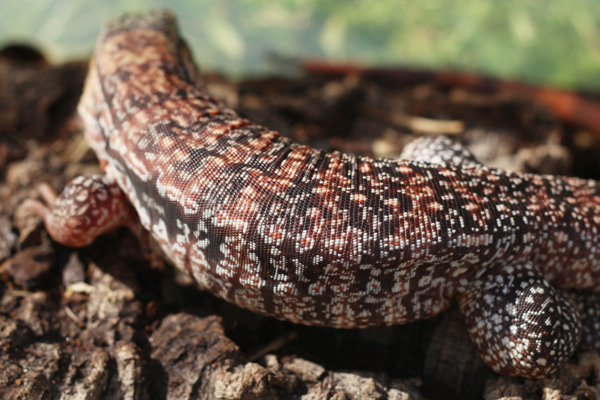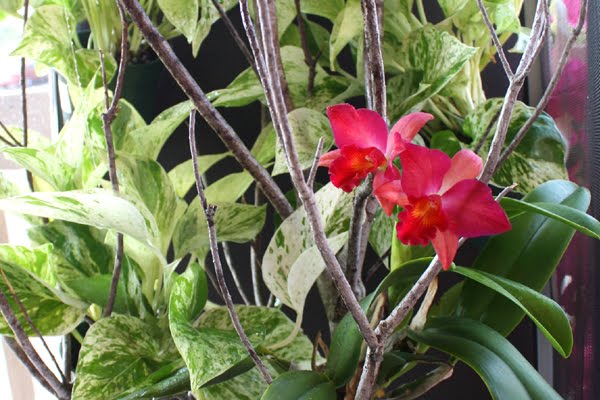Unsurprisingly, my most popular post to date is How to Set Up a Proper Chameleon Enclosure, which even years later still generated the majority of the
comments and emails I get regarding chameleon husbandry. Of course I’m guilty
of repeating over and over that setting up a cage properly from the beginning sets
you up for success more than anything else – a good cage with the correct
parameters can help even a sickly pet store chameleon bounce back, where as a
mediocre set-up will spell the downfall of any healthy chameleon given a little
time.
This week I’ll delve a bit into one aspect which I think
many chameleon owners tend to fall short; taking advantage of the
usable space within a cage.
It’s no surprise that decorating a cage is my favorite part
of the whole ordeal! I just love setting up cages, so I’ll walk you through
what I keep in mind when I decorate a cage, whether it’s for a chameleon or a
gecko or a snake. I want to decorate the inside of my cages in such a way that
I meet three basic requirements:
1. Provide natural gradients for regulation of temperature and
UV.
2. Offer a variety of choices for basking, hiding, lounging,
and eating.
3. Make all areas of the cage accessible.
 |
| Little Mojito, a Cuban knight anole (A. equestris) |
We know we need to provide UVB and heat, but just as
important is providing them in such a way that the chameleon can move towards
and away from them as they see fit (i.e. a gradient.) I usually do this by
setting a basking spot in one corner of the cage and providing branches (or
vines, or plants, etc.) at varying heights and distances from the lights so
that the chameleon or other reptile can choose how near or far he needs to be from the lights to
bask. There should never be just a single basking perch – aim to provide 2-3
near the lights at varying heights to give him a choice.
There is no point in providing a large 4’ tall cage if most
of the volume within the cage is totally unusable. An empty cage is no good! What
ends up happening is that you get issues like:
- * Climbing the walls and potentially ripping out fingernails in the screen.
- * Hanging from the ceiling to get closer to the basking light because the basking branches are too few or too far away (risking burns.)
- * Face-rubbing against screen or glass sides.
- * Stress from being too exposed within the cage.
Don’t be afraid to fill in the cage generously, there should
be a good balance of places to use as walkways, things to hide in/behind, and
open basking areas. And as always, tailor the decoration to suit the particular
species (and individual) you are keeping.To illustrate how I go through the decorating process I’m
going to use my Cuban knight anole, Mojito, and his new Rain Forest Habitats enclosure. He is just a little thing still so I do not want to overstuff the cage so that hunting crickets or roaches is hard for him, but I do want him to feel that he has plenty of places to hide in, climb on, and navigate around.
 |
| His bare Rain Forest Habitats cage. In this case an enclosure measuring 24" D x 18" D x 18" W. |
 |
| An example of poor decorating. This would be fine, but it fails to take advantage of the whole cage. It lacks basking options. 50% Of the cage remains bare, in this case. |
 |
| Much better! With added grapewood, some cork bark, and zip-ties to hold it all together, this cage is now much more fully utilized. |
It does not have to be complicated to decorate a cage while
taking advantage of the space available. For very little money I have decorated
Mojito’s cage, utilizing a single pothos plant (about $10), two pieces of
grapewood (at about $10 per piece, but branches from outside can also be used
for free) and some pieces of bark (found outside.) A larger cage will be just
as easy, but will need more wood and perhaps 2-3 plants. I also did this
without ruining the PVC cage sides, and it is completely changeable if I want
to redo it in a few weeks.
What do you say, dear readers, is this something you try to
keep in mind when decorating a new cage? Do you try to see how you can really utilize
all of the cage or is this something you struggle with? Do you feel you need
tips and tricks to figure out how to utilize that top half of the cage better?
Let me know!















Your enclosures are so beautiful! I don't have very many arboreal species yet, but next time I remodel one of the terrariums, I'll keep this post in mind. :)
ReplyDeleteLove your blog! In your opinion, is it a good idea to re-arrange or swap branches and plants occasionally to give a chameleon some variety, or does this just stress them out?
ReplyDeletenice post
ReplyDeleteEvery day I visit a number of blog sites to see content, however this offers quality based content.
ReplyDeletedartsbeasts.com/